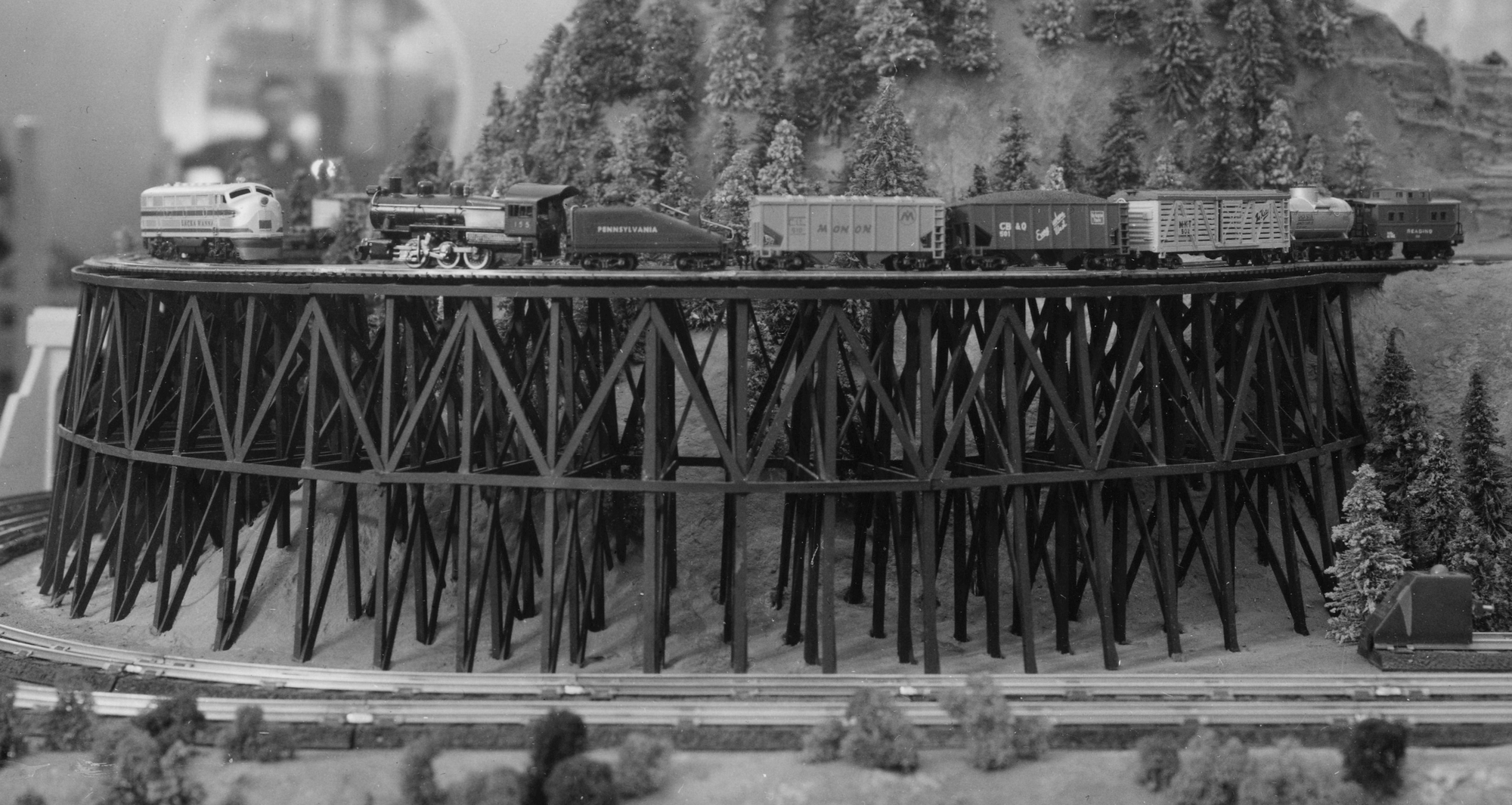Return to Unusual Items & Production Prototypes |
|
| Description | Prototype and Paint Samples on the Super Layout at the Gilbert Hall of Science in New York |
| Category | Prototype & Paint Samples |
| Remarks |
Below you will find closeups of each piece of visible equipment and comparisons with both 1955 Gilbert production and Varney production of that time period. Let us know if you have any insights into these photos. |
|
|
| Section of Original Photograph - Click here to see full photo | |
| This particular photo was taken on the huge super layout which filled the first floor of the New York Hall of Science between 1955 and 1958 and has been displayed on the americanflyerdisplays.org website for quite some time now. I recently had occasion to look at a printout of it and discovered something I hadn't seen before. The 0-6-0 locomotive pictured is not a 433 which was typical of 1955-56 production, but a 155 from the pre-Korean war era. The photo reveals that it is equipped with an NMRA coupler, rather than the 1950 Gilbert coupler. I showed the photo to Dom San Giovanni and he found even more interesting details in the photo. It is quite possible that all the other cars and the Lackawanna diesel are paint samples of the 1955 train line. Elsewhere in this section you will see Dom's 506 prototype and we believe it is possible that the caboose at the end of this train is that exact model. | |
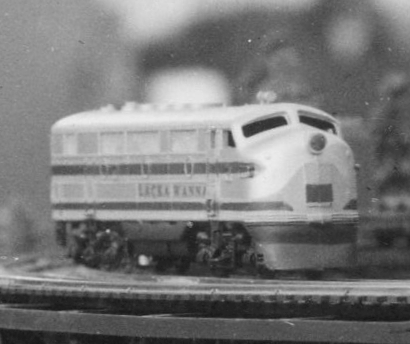  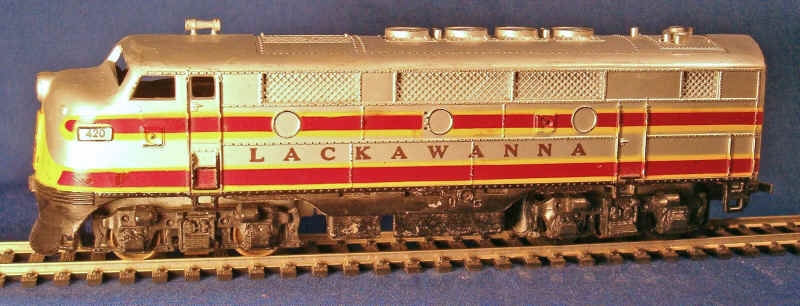 |
|
| The Lackawanna F3 on the layout is almost exactly the same as the illustration in the catalog. On both the Lackawanna lettering is compressed and confined to the first two panels to the rear of the cab door. Though it is difficult to tell, I think the yellow nose is present, but within it is a rectangular box that could be a stand in for the Lackawanna herald. On the production model the word "Lackawanna" is spread out and takes up all three panels between the doors. It is difficult to say, based on the black and white photo and catalog illustration, I do believe that the yellow edging on the striping is present on the layout locomotive and the catalog illustration. | |
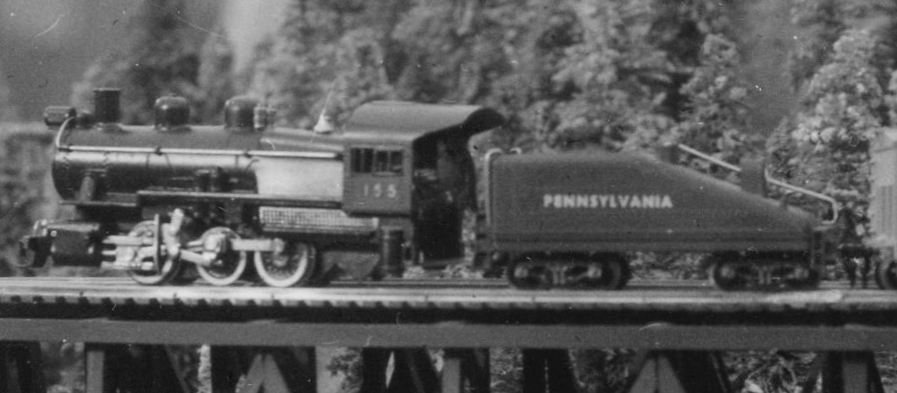     |
|
| The locomotive on the layout clearly appears to bear the characteristics of the 155 but has a visible NMRA coupler on its rear. The words "Pennsylvania" on the tender are compressed as they were on the 155 and not spread out as they were on the 433. | |
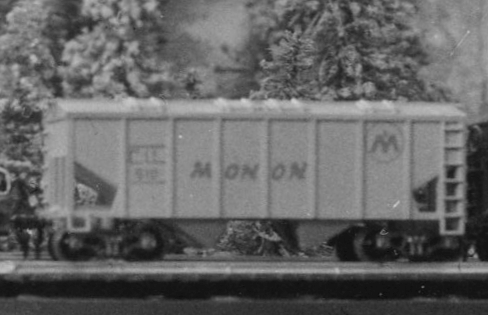 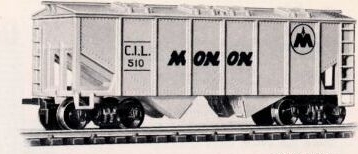 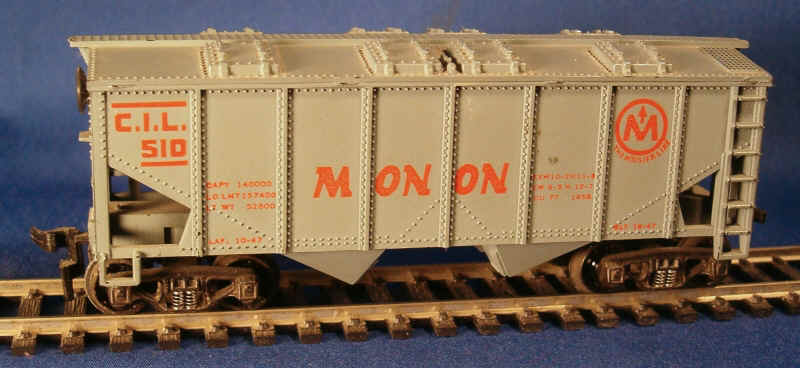 |
|
|
The car from the layout is almost exactly like the car shown in the catalog. Both the car in the photo and the car in the catalog lack reporting marks. Also the "CIL" (for Chicago Indianapolis and Louisville) and the car number (510) are placed in the second panel, rather than in the first panel as they are on the production car. Also there is writing around the Monon Herald on the production car. |
|
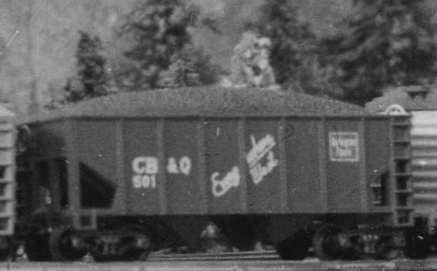 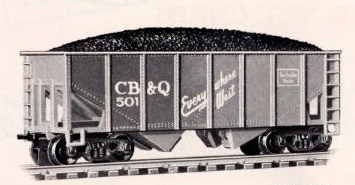 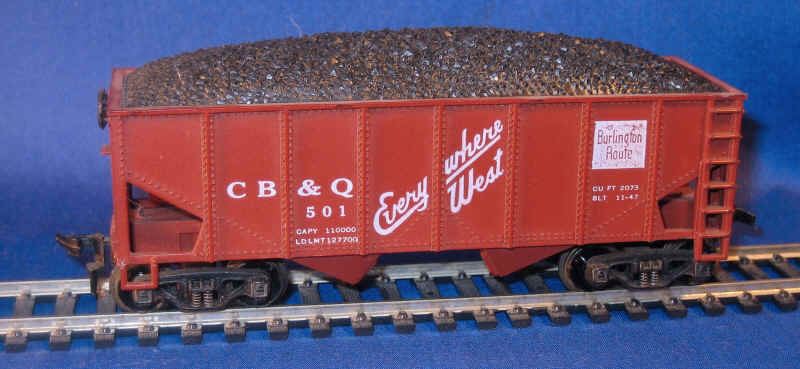 |
|
| Again, there are no reporting marks on either the car from the layout or the car in the catalog illustration. The car number is on the second panel on both the car from the layout and the catalog illustration, rather than on the third panel as it is on the production car. In addition, the herald on the layout car and the catalog car is light printing on dark rather than dark priniting on a light background as it is on the production car. | |
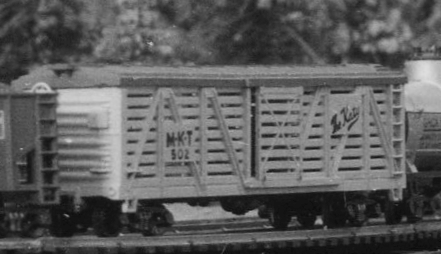 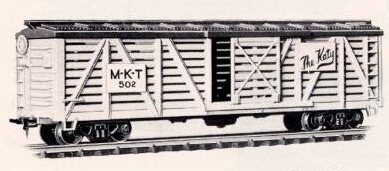 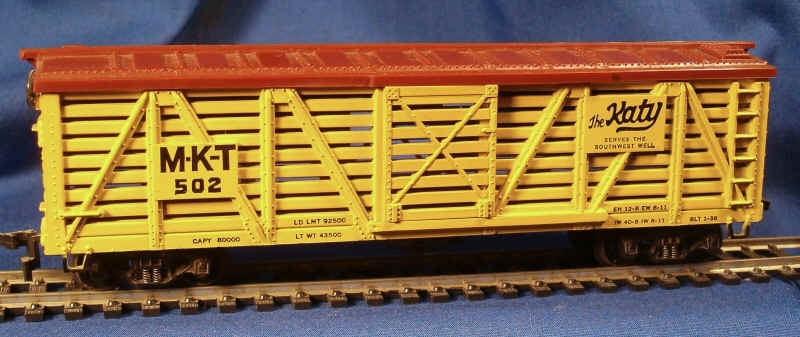 |
|
| Again, the car from the layout and the car in the catalog illustration both have no reporting marks. The words "The Katy" are more angled on both the layout car and the catalog illustration. Also both the layout car and the catalog illustration lack the black steps found on production cars and seem to have a light colored brake wheel, rather than the black one found on production cars. In addition, they lack the words "Serves the Southwest Well" beneath "The Katy," which are found on the production car. | |
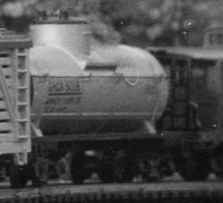 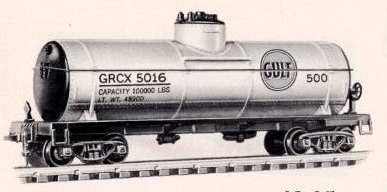 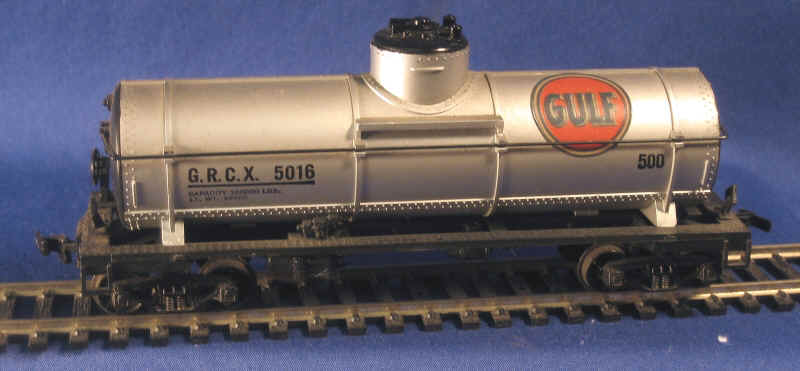 |
|
| It is difficult to come to any conclusions about the tank car in this photo for two reasons. First of all because of the curvature of the track, the view of the car is not as good. Second, if we assume that the illustrations of this car in the catalogs, like the illustrations of the other Varney cars, is of the paint sample, there is very little to distinguish the paint sample from the production models, other than the size of the reporting marks and the placement of the Gulf emblem relative to the railing. With that said I am not sure the reporting mark of "GRCX' as used on the production models is visible here and I can't make out the writing below that I am also not sure that is a Gulf emblem on the rear portion of the car, as It looks smaller. If it is a Gulf emblem, its placement is more consistent with the production car than the presumed paint sample in the catalog photo. | |
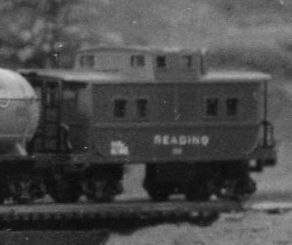 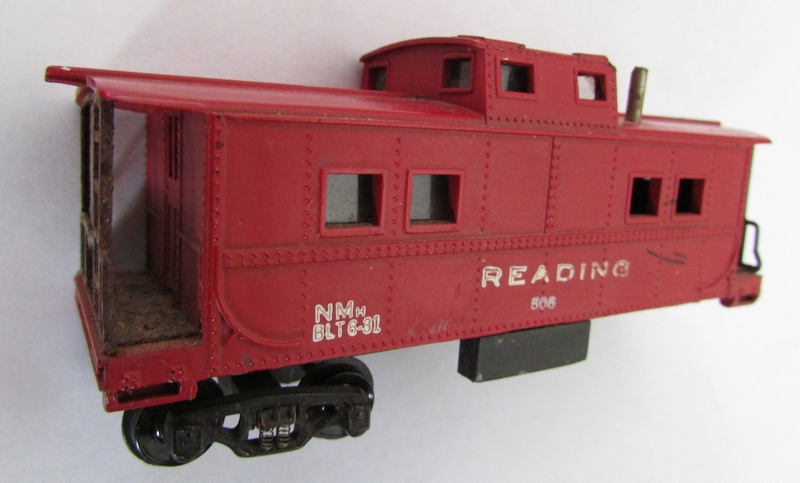 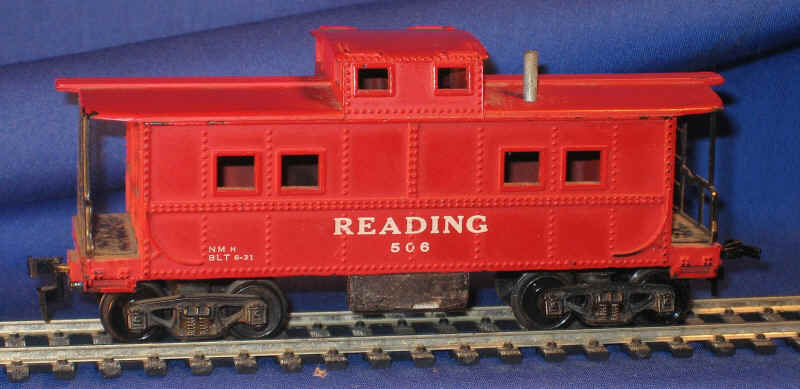 |
|
| On the caboose, we are fortunate to have been able to identify a car that might have been the exact model in the photo. It was obtained from the collection of James A. Magistro, a former Gilbert employee, by Dom San Giovanni. The possible prototype for the 506 Caboose appears to be a reworked 131 from the pre Korean war Gilbert line. It differs from the production 506 in that it uses sans-serif lettering instead of the serif lettering used on the 506. The placement of the "Reading" lettering at a slight downward slant and the fact that its placement is not symmetrical relative to the vertical rivet lines supports the belief that this may be the exact caboose in the Mohrlang photo. On the production model, the "Reading" lettering begins on vertical rivet line to the left of center of the car and ends on the rivet line to the right of center. On this car the "R" begins to the right of the left of center rivet line and the "G" ends to the right of the right of center rivet line. This placement, as well as the slanted lettering appears to be discernable in the Mohrlang photo. | |
